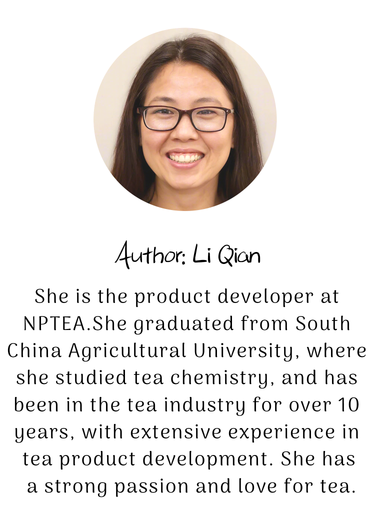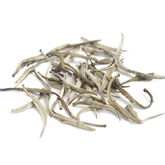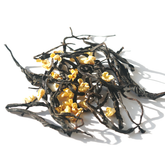Are Tea Bags Bad for You? The Shocking Truth About Plastic Fibers, and False Marketing
A few years ago, I walked into an American supermarket and casually picked up a box of tea bags from a well-known brand to take home. Back then, I didn’t think much about it—tea bags seemed convenient and perfect for a busy lifestyle. But when I opened the tea bag, I noticed the tea inside wasn’t whole leaves like I’d grown up with in China. Instead, it was finely crushed tea powder. The brewed tea turned out dark and murky, completely different from the clear, fragrant loose-leaf tea I was used to. That’s when I started wondering: Are tea bags actually healthy?
In 2019, a McGill University (Canada) study revealed that some plastic tea bags release billions of microplastic particles when brewed with hot water—far exceeding plastic levels found in everyday foods. This means that if you regularly drink low-quality tea bags, you might unknowingly ingest microplastics, with potential long-term health risks.

My conclusion: "Plastic tea bags do release microplastics when heated, but that doesn’t automatically mean they’re toxic—what matters is whether the material meets food-grade safety standards."
Main Materials of Tea Bags and Health Impacts
The material of tea bags directly impacts health and brewing safety. Common materials include plastic (PET/nylon), paper (bleached/unbleached), corn fiber (PLA), and fabric (cotton/silk). Different materials may release microplastics, chemical residues, or other potentially harmful substances when brewed at high temperatures. For example: plastic tea bags risk releasing microplastics, bleached paper tea bags may contain chlorine residues, while PLA (corn fiber) and unbleached paper are relatively safer. When choosing tea bags, consumers should avoid brewing plastic-based options with hot water and instead prioritize unbleached paper, PLA, or organic cotton materials, while also checking for food safety certifications to ensure overall quality of both the tea and packaging.
| Material Type | Common Forms | Key Health Concerns | Sustainability Rating★ |
|---|---|---|---|
| Polypropylene (PP) | Clear pyramid bags | Releases microplastics (2,300-5,800/cup) May leak hormone-like chemicals (BPS) |
★★☆☆☆ |
| Nylon (PA) | Cold-brew mesh bags | May release cancer-linked chemicals 3× more microplastics than PP |
★☆☆☆☆ |
| Bioplastic (PLA) | Corn-based fiber bags | May contain waterproofing toxins (PFCs) Doesn’t break down at home, releases methane |
★★★☆☆ |
| Standard Paper | Basic tea bags | May contain toxic glue residues Bleaching byproducts linked to organ damage |
★★☆☆☆ |
| Bamboo Fiber | Eco-labeled bags | May retain harsh bleaching agents | ★★★★☆ |
| Unbleached Cotton/Hemp | Premium organic bags | No chemical leaching risks | ★★★★★ |
Data sources: 2023 International Food Packaging Council Report, EU ECHA Database2022, Environmental Science & Technology)
Simple Ways to Identify Tea Bag Materials
You can quickly identify tea bag materials through four steps: look, burn, feel, and brew. Natural materials like wood pulp paper or plant fibers usually have an off-white color, a rough texture, and burn without a chemical smell. In contrast, plastic-based materials (nylon/PET) are smooth and shiny, produce black smoke when burned, while PLA (a biodegradable corn-based material) releases a sweet, corn-like scent during burning. If the brewed tea appears cloudy or forms an oily film on the surface, it likely contains plastic components.
| Material Type | Appearance | Burn Test | Texture/Smell | Brewing Behavior | Safety Tips |
|---|---|---|---|---|---|
| Natural Paper | Light tan, visible fibers | Burns fast, white ash, no smell | Rough, no chemical odor | Clear liquid, no residue | Pick unbleached; avoid strong smells |
| Plastic (Nylon/PET) | Clear/glossy, smooth surface | Melts into black beads, plastic smell | Slippery, feels hot when heated | Oily film forms after cooling | Use below 80°C; never reuse |
| PLA Biodegradable | Semi-transparent, matte finish | Blue flame, yellow wax residue | Slight sweet corn smell | Cloudy if oversteeped | Needs industrial composting |
| Plant Fiber | Brown, plant debris visible | Slow burn, earthy ash smell | Easy to tear, fluffy feel | Slightly cloudy (natural) | Bury in soil for composting |
Common Misconceptions About Tea Bags
High-end tea bags do not always guarantee safety. Luxury brands often create a false sense of security through "packaging markups" and "pseudo-innovative materials". A New York University study revealed that for a €25/box tea product, only 12% of the cost goes into materials, while 63% is spent on marketing and fancy packaging. More dangerously, many of these products use "composite materials" (e.g., nylon mixed with metal threads) to enhance texture, which can lead to excessive heavy metals like lead and arsenic. Ordinary consumers should prioritize third-party lab test reports over being misled by price tags or brand hype.
| What People Think | The Truth | Common Traps | What to Do Instead |
|---|---|---|---|
| "Expensive = Safer Materials" | Materials cost less than 15% (Source: Nielsen 2023) |
Brands use cheap industrial glue (e.g., epoxy resin) |
Ask for a material cost breakdown |
| "New Material = Better" | 76% of "new" materials aren’t FDA-approved (FDA 2022 Report) |
Fake names like "corn silk" hide plastic mixes | Check the official material code |
| "Handmade = Chemical-Free" | Hand-sewn bags often use toxic metal threads (Study: Journal of Food Engineering 2023) |
Fancy stitching may contain nickel/cadmium | Choose heat-sealed bagsinstead |
| "Certified = Totally Safe" | Most certifications only check 1-2 risks (e.g., FSC only tracks wood sources) |
Multiple logos create false confidence | Look for 3+ certifications combined |
Summary of Tea Bag Health Concerns
Tea bags do pose certain health risks, primarily due to harmful substance levels and the cumulative effects of long-term exposure. Plastic materials may release microplastics and chemicals under high heat, bleached paper could contain chlorine residues or glue additives, and even "eco-friendly" PLA (corn-based fiber) may not be entirely safe. Additionally, brand transparency is often lacking, with some companies exaggerating "green" or "non-toxic" claims—even expensive tea bags might still harbor plastic components or chemical residues. Ultimately, achieving true safety and health is far from easy.
Recommendations for Long-Term Tea Drinking
Tea bags are neither cost-effective nor free from serious health risks—why not switch to healthier loose-leaf Chinese tea? Zero additive risks: Loose-leaf tea contains no artificial materials. Traditional varieties like Wuyi rock tea and West Lake Longjing are produced using natural methods like sun-withered processing. Flavor control: Whole tea leaves release polyphenols and caffeine more gradually. For example, brewing Lapsang Souchong in a lidded bowl for under 10 seconds for the first 3 infusions avoids bitterness while preserving sweetness—a flavor tea bags can’t match. Cost transparency: A 250g pack of Yaunan Dianhong black tea costs around $25 (¥180), with 5g per session priced at $0.5 and reusable for 5+ brews (actual cost per cup: $0.1). Returning to natural loose-leaf tea is undeniably the healthiest choice—after all, humans have drunk loose-leaf tea for five thousand years, while tea bags have existed for barely a century.
Returning to natural loose-leaf tea is undeniably the healthiest choice—after all, humans have drunk loose-leaf tea for five thousand years, while tea bags have existed for barely a century.
SEE MORE ABOUT CHINESE TEAS
If you have questions about selecting tea:
Learn-more-about-chinese-tea
If you have questions about the benefits of tea:
Health-benefits-of-chinese-tea
If you have questions about brewing tea:
How-to-brew-loose-leaf-tea






